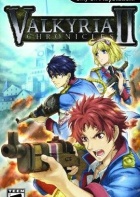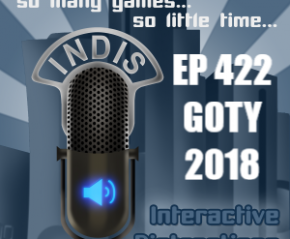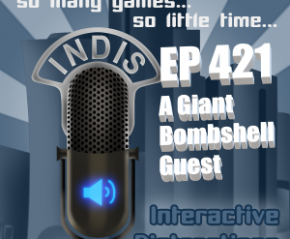From the Archives: Valkyria Chronicles II – Review Draft


| Game Name: | Valkyria Chronicles II |
| Platforms: | PSP |
| Publisher(s): | Sega |
| Genre(s): | Strategy RPG |
| Release Date: | 08/31/2010 |
| ESRB Rating: | T |
| Big Ups: | BLiTZ Engine fully in tact on the PSP, Deeper class system, Engaging landscapes and battles, flawless gameplay |
| Big Downs: | Escort missions can be a pain, Grinding created by the completly random credit system, AI has different "rules" than the player |
This review was written over 5 years ago. It just never got published. So here it is in its raw glory. Sorry… no screen grabs on this one… We didn’t get around to that.
It’s rare that a game comes along that is absolutely fantastic and unique at the same time. The original Valkyria Chronicles for PS3 is such a game. It’s even rarer that a sequel to such a game comes along and lives up to the standard of quality set by the first. And it’s unheard of that such a sequel would live on a “lesser” platform, right? So many were a little baffled at Sega’s move to put Valkyria Chronicles II on the PSP. Would the engine transfer to the PSP and still look as beautiful as the first? Would the game feel the same? Both are valid questions.
Valkyria Chronicles II takes place two years after the events of the first game. A rebel uprising has started a civil war over the current state of Gallia and her leader. With the army’s forces thinned out from the war with the empire two years before and the militia is unable to fight in such a case due to Gallia’s laws, much of the responsibility to fight these rebels falls on the under-experienced shoulders of Lanseal Military Academy. The game stars a young and ambitious protagonist named Avan who works hard to follow in his big brother’s (Leon’s) footsteps. Of course Leon left some pretty big shoes to fill as he died in battle and was the star student at Lanseal.
One of the great things about the first game is the level of maturity. Being that the second game takes place at a school of sorts may sound a little worrisome. But fear not, for the most part, the story keeps the maturity level relatively high. You’ll definitely get those eye rolling moments, but there are some characters you will appreciate since they keep it mostly in check.
Avan is assigned to Class G, the joke of Lanseal, and thrown into the role of Class head. You, also, get to know the two supporting characters Zari and Cosette who are put in Class G with Avan, then meet a few of the other characters before you are introduced to Lanseal. The presentation of the game is a bit different. The history book has been replaced with an overhead map of Lanseal. It’s different but still well put together and easy to navigate. From the map you can purchase new weapons, train your troops, access a store where you can buy things like additional missions, orders and newspapers as well as access the briefing room so you can perform missions. Story segments are also displayed on the map as they take place. Watching the main story sequences as well as finishing a specified number of “key” missions will allow you to deploy to the story mission for the chapter or month as they are displayed in this game. There are side stories that flesh out the other characters of the game as well. Some of these sequences result in character specific missions where, after completing them, Avan will gain their trust and those characters will become more valuable. New potentials can unlock, and, even better, negative potentials can turn into positive ones. There’s even a character mission that gains you another character.
Similarly to the first game, each character has a type. Some of the squad types are the same: Scout, Shocktrooper, Lancer, and Engineer. Though in this game, you don’t start with Snipers. Instead, that initial class is replaced by the Armor tech; a very powerful melee class that carries around a shield that deflects most bullets. The squad classes have been further expanded in VCII. Now, not only can you level up the base class for all your characters, but you can distribute your squad members into more powerful subclasses. For instance, a Sniper is a subclass of the Scout. Each character must earn credits to move to their advanced class. Each base class has 2 advanced classes and each of those have 2 expert classes. So where VC had 5 squad member types, VCII has 35, which is quite the difference. And, unlike the first game where you could just pick your favorites, VCII promotes the use of all of your squad mates since they have to be used in battle to earn the credits needed to advance their class. Of course this is where one of the frustrations of this game comes out. The problem here is that the credit distribution seems to be completely random. It seems as if you’ll go replay a mission with the sole desire to get a particular credit for a particular character, and the game will give that credit to every other character you bring into battle with you but the one that needed it. I even ran a mission 4 times to get Cosette a certificate. Had her do most of the killing and when she finally got one, she killed 80% of the enemies during the mission. One of the other squad members took out one enemy and supported Cosette on two others. He received six certificates. SIX! As I said, it is completely random.
Missions are handled very elegantly for the smaller and less powerful hardware. Instead of the single big map for each mission, there may be several smaller maps that squad members can move between by the way of waypoint bases. There is a large variety of maps that you will traverse and the way the missions are designed to use the maps approaches genius. It helps that each map can start you in several different spots depending on the missi0n. Due to the multiple maps, VCII also does away with the one turn wait for reinforcements to show up. When you ask for them, they show up. This makes it much easier to decide how to deploy your troops.
Combat, believe it or not, feels just like the first game. There are some changes of course; some good, some bad.
The biggest positive change for this game, the AI’s crossfire advantage has been removed. In the first game, if you were standing in front of a Shocktrooper and you selected a unit to take a turn then tried to immediately go into aiming mode, the shock trooper would get off a bunch of shots before you actually got your chance to shoot. If your character was low on health, he or she was pretty much dead instantly. Now, immediately going into aiming mode, Shocktroopers get no shots off, which is a huge plus. The usage of the tank has also been greatly improved, with a ton of customizable options, including a “light tank” body that only takes 1 CP to take a turn. Talk about advantage. Most of the classes seem to have much better accuracy as well, including and probably most importantly, the tank.
The negatives of the gameplay changes are not at all game breaking. There are escort missions, which most people hate. But they are done really well. The problem is that when you start an escort mission, you are stuck with the vehicle they give you. You can’t put any modifications on it at all. Some maps have weather conditions in VCII and your vehicles can be equipped with items that cancel the negative effects of those conditions. On escort missions, you don’t get to equip those items. You also don’t get to change your weapon, so you’re stuck with the crappiest of all of the mounted Gatling guns in your arsenal. Needless to say, escort missions are the ones I always seem to have the most trouble getting an A on. Next is the fact that the AI doesn’t have the same set of rules to follow that the player does. Your squad is limited to 5 squad members deployed per map and only 6 total squad members deployed at any given time across all maps in a mission. The AI, yeah they get as many as they want it seems. This can get a bit frustrating.
One annoyance that wasn’t changed from the first one is how powerful the bosses are. They are pretty ridiculous sometimes. There’s one boss that is a Fencer (advanced class under the Armor Tech). Fencers on your squad have the lowest AP of all classes. Not this boss. She has mobility better than any of your best scouts and the ability to do half of your main characters total damage in one shot while he’s evading. Then, it takes 2 tank rounds to the back of the head to kill her. Did I mention that all bosses will evade you every time unless you are hitting them from behind? Really, Sega? REALLY? Again, not game breaking in the slightest, but it would be nice that if the leaders of the enemy squads were tuned down a little.
Quite possibly the only piece of the BLiTZ system and Canvas engine that took a hit with the slide back to the PSP is the visuals, but even on the PSP, the Canvas engine does a fantastic job of showing how beautiful it can be. While playing, you won’t even realize that the games visual prowess is lower than its big brother in most cases. This is, of course, not including when you get a look at your character’s faces, which can seem a bit unusual. Story segments of the game have actually been taken out of the Canvas engine and have been replaced with dynamic comic-like segments where you see a background and images of the characters that are speaking. A bit primitive, but the way they do it works well and they do a good job of getting their point across with static images.
Possibly the best improvement Sega made to the VC series with VC2 is the sheer amount of things there are to do. There are a lot more missions to complete. There are aces to find in those missions that give you plans for a pretty impressive crafting system. And of course there is the desire to do your best to give everyone a shot at the battle field so that you can move all of your characters to an advance class. Then there are passwords to discover that will get you cameos from the first game, and several other ways to get bonus characters. Have the first game? Have Phantasy Star Portable 2? Transfer the save games to your VC2 memory stick and unlock a couple.
Sega’s not stopping there either. There has already been one DLC pack released and there are plans to put out more. Many of which are quite advanced. There is no doubt that a player can easily put 100 hours into this game.
So, did the game stand up to the high standards of the first game. Yes, in fact it exceeds them.
Would the engine transfer to the PSP and still look as beautiful as the first? It may not be quite as beautiful, but pretty darn close.
Would the game feel the same? Yes, and in some ways, it feels better (PSP standby anyone?).
When it comes down to it, this game may be the best $40 I’ve spent on a PSP game in a very long time. I highly suggest this game to anyone that enjoyed the first game or anyone that enjoys tactical RPGs. Enjoy.






